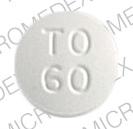Fareston Disease Interactions
There are 4 disease interactions with Fareston (toremifene).
Toremifene (applies to Fareston) QT prolongation
Major Potential Hazard, Moderate plausibility. Applicable conditions: Long QT Syndrome, Hypokalemia, Magnesium Imbalance, Congestive Heart Failure
Toremifene has shown to prolong the QTc interval in a dose and concentration related manner, which can result in Torsade de Pointes (ventricular tachycardia), syncope, seizure, and/or death. Toremifene should not be prescribed to patients with congenital or acquired QT prolongation, uncorrected hypokalemia or uncorrected hypomagnesemia. Caution is advised in patients with congestive heart failure, and patients taking other drugs that can prolong the QT interval.
References
- "Product Information. Fareston (toremifene)." Schering Corporation PROD (2001):
Toremifene (applies to Fareston) endometrial hyperplasia
Moderate Potential Hazard, Moderate plausibility. Applicable conditions: Endometrial Dysplasia
Endometrial cancer, endometrial hyperplasia, hypertrophy, and uterine polyps have been reported in some patients treated with toremifene. Long-term use of toremifene has not been established in patients with preexisting endometrial hyperplasia. All patients should have baseline and annual gynecological examinations. In particular, patients at high risk of endometrial cancer should be closely monitored.
References
- "Product Information. Fareston (toremifene)." Schering Corporation PROD (2001):
Toremifene (applies to Fareston) hepatotoxicity
Moderate Potential Hazard, Moderate plausibility. Applicable conditions: Liver Disease
Hepatotoxicity, hepatitis, and non-alcoholic fatty liver disease have been reported in clinical trials and postmarketing with toremifene. Liver function tests should be performed periodically. Caution is advised in patients with any hepatic impairment.
References
- "Product Information. Fareston (toremifene)." Schering Corporation PROD (2001):
Toremifene (applies to Fareston) thromboembolism
Moderate Potential Hazard, Moderate plausibility. Applicable conditions: History - Thrombotic/Thromboembolic Disorder, Thrombotic/Thromboembolic Disorder
Thromboembolic events such as thrombophlebitis and pulmonary embolism have been noted during toremifene therapy. Patients with an active or past history of thromboembolic events should generally not be administered toremifene.
References
- "Product Information. Fareston (toremifene)." Schering Corporation PROD (2001):
Fareston drug interactions
There are 384 drug interactions with Fareston (toremifene).
Fareston alcohol/food interactions
There is 1 alcohol/food interaction with Fareston (toremifene).
More about Fareston (toremifene)
- Fareston consumer information
- Check interactions
- Compare alternatives
- Pricing & coupons
- Drug images
- Side effects
- Dosage information
- During pregnancy
- Generic availability
- Drug class: hormones/antineoplastics
- En español
Related treatment guides
Drug Interaction Classification
| Highly clinically significant. Avoid combinations; the risk of the interaction outweighs the benefit. | |
| Moderately clinically significant. Usually avoid combinations; use it only under special circumstances. | |
| Minimally clinically significant. Minimize risk; assess risk and consider an alternative drug, take steps to circumvent the interaction risk and/or institute a monitoring plan. | |
| No interaction information available. |
Further information
Always consult your healthcare provider to ensure the information displayed on this page applies to your personal circumstances.


